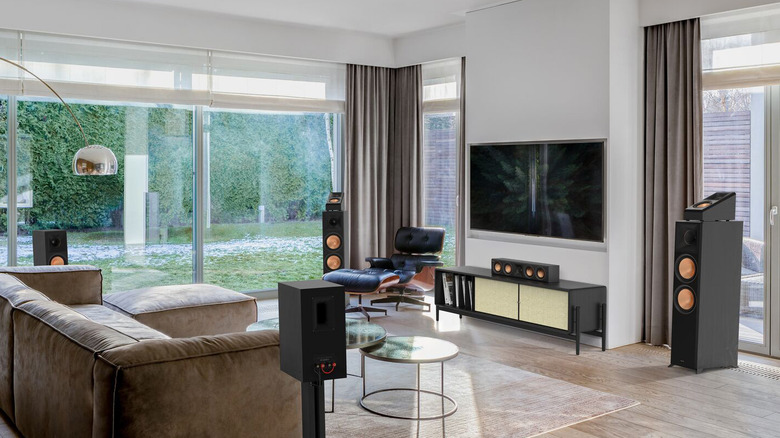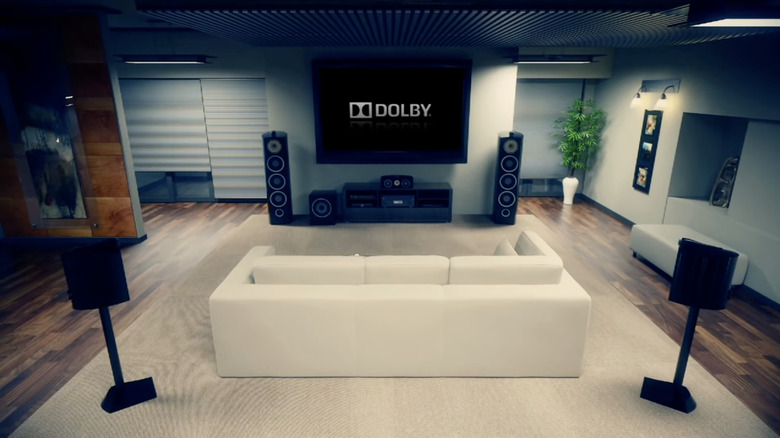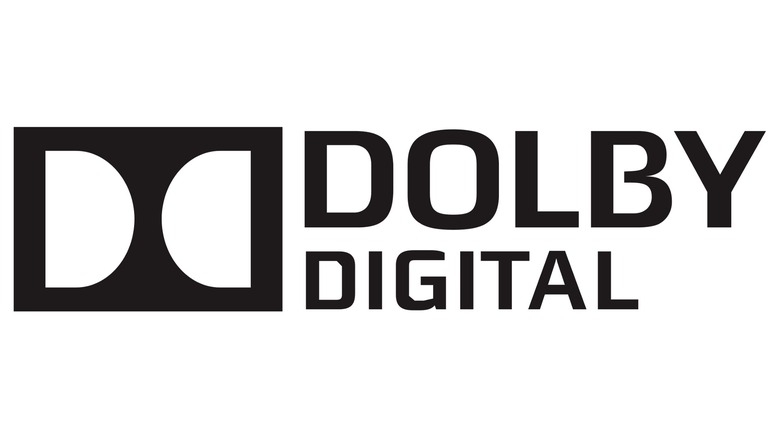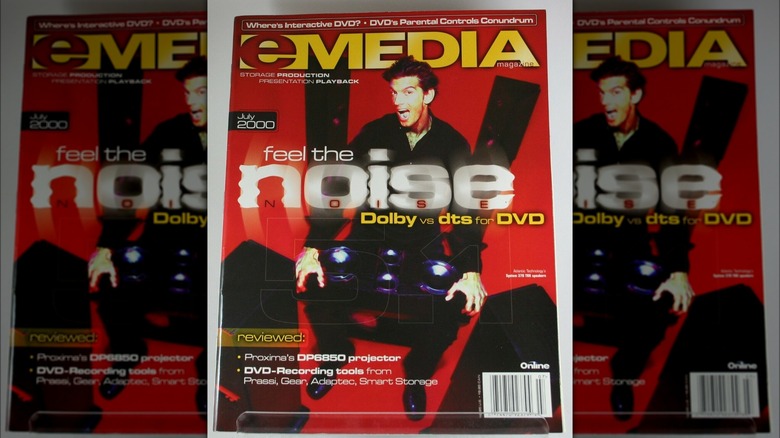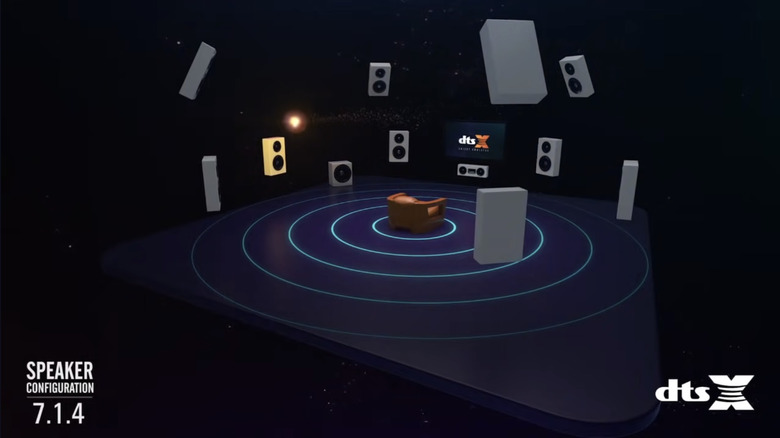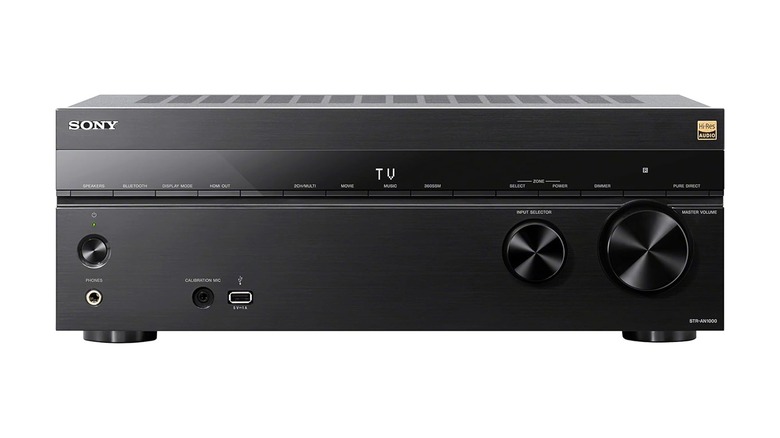DTS:X Vs Dolby Atmos: The Two Top Surround Sound Technologies Explained
We may receive a commission on purchases made from links.
If you've been looking into building a new home theater system and haven't looked into the topic in the last decade or so, then you've probably been hit by some new terminology that you weren't previously familiar with. The old-school front speakers, center speaker, surround speakers, and subwoofers have been joined by height-level speakers, which are either positioned in/on your ceiling or in upward-firing enclosures that bounce the sounds off the ceiling to make it sound like effects are coming from over your head.
With these changes came new surround sound formats from the leaders in the field, Dolby and DTS. Dolby came first with Dolby Atmos, while DTS soon followed with DTS:X. The two companies have been rivals for decades and have always argued over which had the better technology. The spatial audio era is no different, with DTS pledging that it has a more flexible and user-friendly format. So hewre are the key differences between DTS:X and Dolby Atmos.
What is surround sound?
Put simply, surround sound uses multiple speakers placed strategically around the viewing/listening area to create a more three-dimensional sound design for a given movie, TV show, video game, or music album. The first commercially popular surround sound format was Quadraphonic sound for music in the 1970s, with two front and two read channels. There was a not-insignificant amount of titles released on vinyl with Quadraphonic encoding, but it fizzled out before consumers could widely adopt it.
The technology spread to film, with Dolby Labs taking center stage with its Dolby Stereo technology that could extract surround sound information from what, on the surface, seemed like a simple two-channel stereo audio track. (If that sounds familiar, it may be because it's very similar to the Dolby ProLogic encoding that's still in AV receivers today.) In time, the standard configurations would take shape: 5.1 channel surround sound, meaning two front speakers in the traditional stereo positions, a center speaker for dialogue, two rear speakers, and a subwoofer for low-frequency effects. In time, that would expand to 7.2 channels, with the surround channels being split off into two side channels and two rear channels, plus an additional optional subwoofer.
Most recently, technologies like Dolby Atmos and DTS:X added a new dimension: Height-level or overhead-firing channels. Those are represented by a third number: a 7.1 setup where the front left and right speakers also have upward-firing drivers would be 7.2.2 channel surround sound.
Audio codecs explained
In the digital realm, audio data is defined by codecs, the type of software that handles both the encoding and decoding of a given audio stream (or video stream or still image). Speaking broadly, audio codecs use two different types of compression, lossless and lossy. Lossless codecs compress files by throwing out redundant data and nothing more, meaning that the original, uncompressed file should be able to be reconstructed from a losslessly compressed one. In that sense, it's like a ZIP or RAR file, just optimized for audio. Lossy compression, meanwhile, works completely differently, using psychoacoustic modeling to throw out audio that, in theory, the human ear should not notice. In practice, it doesn't always work that way, but it's still very smart technology.
If the average person has any idea of these concepts, it's probably through music downloads and streaming, where MP3 and AAC are the most popular lossy codecs, while FLAC and Apple Lossless are the most popular lossless ones. The same basic concepts also apply to home theater audio tracks, though. On DVD, the most common audio codec was Dolby's lossy AC-3, also known in the past as Dolby Digital. (The latter name now refers to Dolby's full suite of codecs.) On some discs, it was joined by a track from rival DTS using the lossy DTS Coherent Acoustics (commonly "DTS") codec, which was encoded at a higher data rate. In the transition from DVD to Blu-Ray, these were joined by lossless codecs from both companies: Dolby TrueHD and DTS-HD Master Audio.
The original Dolby Digital vs. DTS war
When it comes to the lossless, Blu-Ray era codecs, there's no difference between Dolby and DTS's offerings because they're both lossless. As lossless codecs, they're always going to sound exactly the same. The only difference between lossless codecs comes in how efficiently they reduce file size.
With lossy codecs, it's a lot more subjective. DTS had its backers on the basis that the higher bitrate made it superior to AC-3, but there was a question as to whether AC-3 was more efficient. "The engineers who wrote the compression algorithm [sic] for each format also used somewhat different, and somewhat subjective, criteria in deciding what parts of the original signal could be eliminated to save bits without sacrificing sound quality," wrote Ian G. Masters in the May 2005 issue of Sound & Vision. He added that DTS and AC-3 versions of a given soundtrack "have been known to vary in their apparent frequency and channel balance," as well.
Complicating matters in the DVD era was that AC-3 was supported on all hardware, like basic DVD players or "home theater in a box" systems, while DTS support was more limited. In its 2006 Annual Buying Guide, Consumer Reports stressed that consumers should look for AV receivers that supported both codecs, something that would soon turn into the default for that kind of hardware. By Blu-Ray, this would stop mattering much to the consumer, as all players fully supported the DTS suite of codecs.
So what are the differences between Dolby Atmos and DTS:X, the two newest technologies?
The differences between Dolby Atmos and DTS:X, the brand names for the revisions that include height level/overhead-firing speakers for spatial audio, are where things get particularly confusing. That's because unlike the previous generations of digital audio from both companies, they're not different flavors of the same thing, even if they might commonly be described as such. Specifically: DTS:X is DTS's latest codec and it allows for spatial audio configurations, while Dolby Atmos is explicitly not a codec. Instead, Atmos describes the audio stream data and the accompanying instructions telling your hardware how to output each channel.
This means that even though they're spoken about as competing formats, and on some level, they are, DTS:X and Dolby Atmos are two drastically different things. A DTS:X track delivers data encoded using the DTS:X codec, while a Dolby Atmos track is encoded using Dolby TrueHD, Dolby Digital Plus/Enhanced AC-3/EAC-3 (which had been used primarily for digital TV and online streaming audio tracks), and Dolby MAT, which is used to deliver TrueHD over HDMI.
Where this gets really interesting is that while Dolby Atmos requires upward-firing speakers to get spatial audio, DTS claimsin its original DTS:X press release, that DTS:X can accomplish spatial audio using speakers in "a hemispherical layout based around the listening position in the room." Audio tracks could be "remapped" for different speaker layouts, making DTS:X more flexible, especially for those unwilling or unable to upgrade their systems to add upward-firing speakers.
Which is better, Dolby Atmos or DTS:X?
"Better" is subjective, but the biggest advantage is probably one belonging to DTS:X. Dolby Atmos. In DTS:X, instead of being broken down into tracks required to have specific positions, everything is broken down into specific objects that can be adjusted individually.
"With spatial remapping with dialogue control, for example, if you are watching a sporting event and want to hear the announcers better, you will be able to adjust the volume of the announcers, as they will be rendered as objects," explained DTS's Dave Casey when asked about DTS:X's differences from Dolby Atmos in a July 2015 interview for Sound & Vision. "Or, if you are watching an action movie with a lot of explosions or cars racing through the streets and want to hear the actors' dialogue more clearly, you will be able to adjust the dialogue."
Casey conceded that the "inclusion of height speakers will best replicate the immersive experience," but stressed that they weren't required.
Meanwhile, one advantage for Dolby Atmos is simply that a lot more content is encoded in that format, especially on streaming services and in video games, with DTS:X generally appearing on Blu-ray Discs. Atmos also supports configurations with twice as many total speakers, 64 instead of 32, but most people won't come close to using even the smaller number of speakers. Realistically, though, any new receiver you buy will support both, and knowing the differences between the two formats is all you need.
